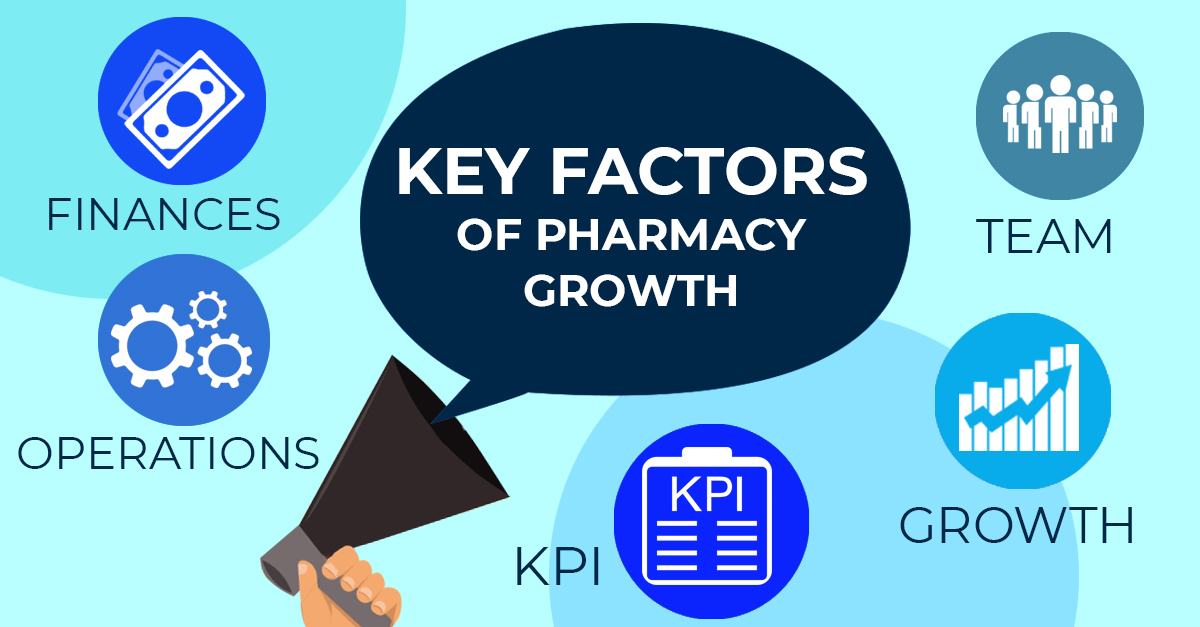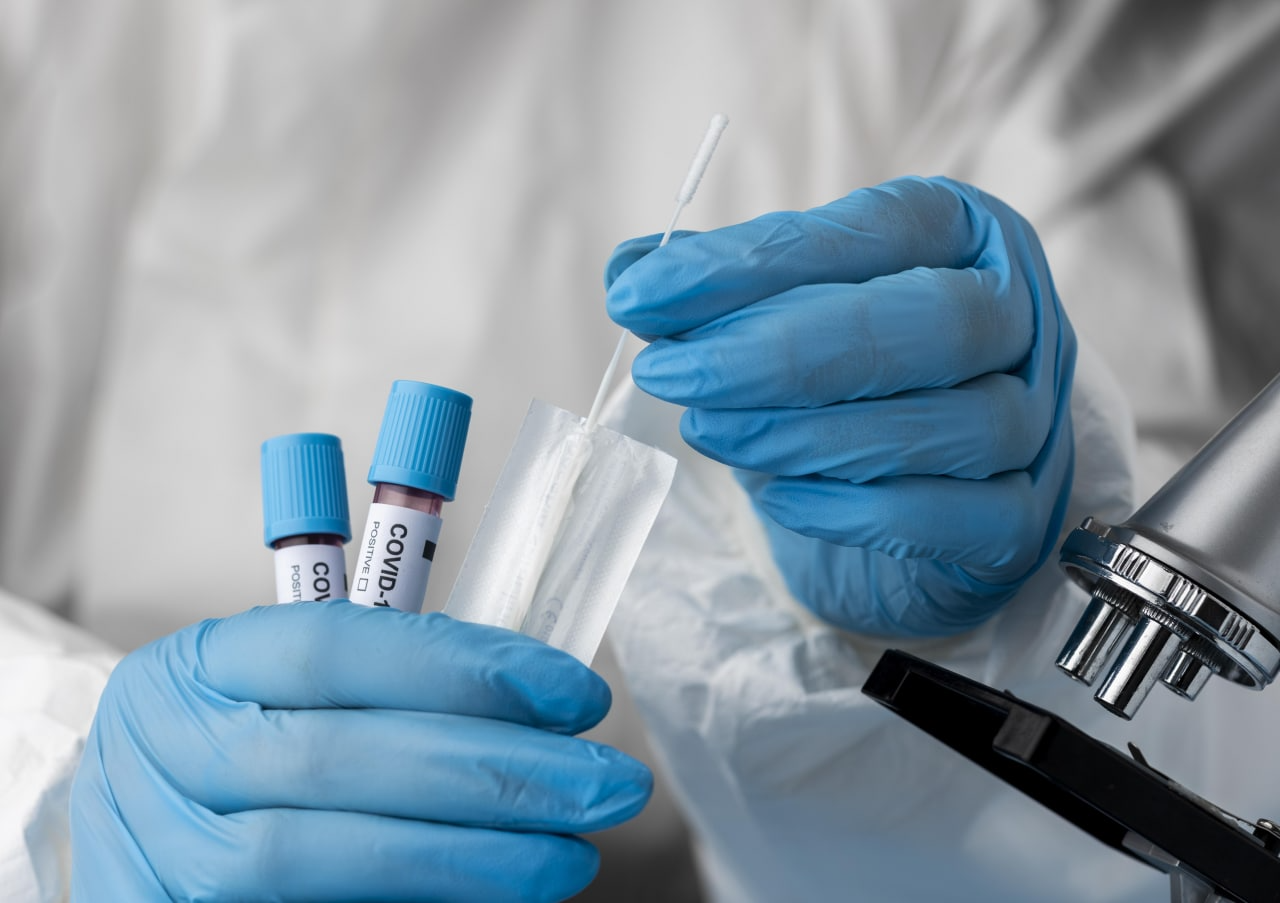Your independent pharmacy is an ecosystem that requires balance. Every aspect of pharmacy ownership lands in one of the four areas. Each area is influenced by KPIs that will diagnose the health of this area. View the text below to know the eight critical, but not so common to measure, KPIs and how managing them will improve your business.
Finances
This area of your business represents all the money coming in and through your pharmacy, from cash flow to cash balance and everything in between. You must have clarity on your financials and know if you’re on the right track detecting symptoms right in time.
Business KPI: Payroll Ratio
The payroll ratio is a spending ratio, but it’s also an efficiency measurement. The goal ratio for pharmacies is less than 13.6%. A higher ratio could be a symptom of several issues and does not necessarily mean that you have too many people on your team. The solution lies in evaluating each employee and determining how to increase their efficiency in producing more revenue.
Business KPI: Net Dollars/Prescription
Often a metric most owners aren’t tracking, your net dollars per prescription measures your bottom line. This number will reveal any significant gaps you had between your gross margin per prescription on the top and how much you have left to your bottom line. If you have a healthy gross margin per prescription, but a lower net dollar per prescription, that tells you that you need to dig deeper into your data to understand what is happening. The best way to understand is to review your financial statements regularly, at least monthly.
Team
Often the Team quadrant is the toughest to improve because it requires a level of self-awareness. This quadrant is not a soft measurement and isn’t just influenced by how well you manage your team. You may quantify by such KPIs as retention and turnover.
Business KPI: Rxs/Employee hour
Your prescriptions per employee hour let you know what your employees produce and measures their true output. Begin by tracking this metric over a month to get an understanding of your benchmark and then begin to put a plan in effect to make improvements. The first step in an improvement plan is to work on your team culture and training to fill your team with high-performers so that you’re increasing the number of prescriptions without increasing payroll hours, therefore increasing your efficiency.
Business KPI: OTC $/Employee Hour
An effective way to improve upon this number is to create an incentive program for your employees to track who sold the most OTC dollars per hour. There are many creative ideas you can use that will empower your employees and allow them the flexibility to succeed.
Operations
This area of your business measures the inner workings and processes of your independent pharmacy. By building solid procedures and systems within your business, you’ll be able to increase your pharmacy’s efficiencies, optimize inventory, and provide better patient care.
Business KPI: Return to Stock %
This business KPI measures the percentage of prescriptions you fill and then get returned to stock (RTS). RTSs are extremely wasteful in an already tight workflow system. There are several reasons why you’re filling prescriptions that are not being picked up. Measuring this KPI will allow you to root out the problem, whether the patient is unaware they have a prescription to be picked up, a high copay, or something that indicates a workflow issue in your pharmacy.
Business KPI: Inventory turns
If you want to run a more profitable pharmacy, you must start with your inventory. Most pharmacies have far too much inventory on their shelves and this is one of the biggest causes of cash flow issues. At a minimum, you should review your inventory turns annually, with your goal being a ratio greater than 16.
Growth
Measuring the KPIs in this quadrant will help you identify what kind of volume is the most impactful to your business, diversify your service mix so you aren’t relying on one traffic source, and ultimately track how effective you are at dispensing.
Business KPI: Volume
A mistake many owners make is assuming volume equals profit and equate increasing dispensing activity with increased profits. The key is targeting your approach to acquiring the right volume. Whether it is a prescriber who gives you more profitable prescriptions or a local employer who has a good insurance plan, seek to improve the volume that is more profitable for your business.
Business KPI: GM/Rx
When you track your gross margin per prescription, you’re measuring how effective you are at dispensing. You must keep tracking this measurement to spot the trends in your pharmacy so you know where to focus your efforts. Increasing your GM/Rx has a direct impact on your ability to pay expenses, the profitability of your pharmacy and, of course, your bottom line. One way to increase your GM/Rx is to diversify your business, such as the prescriptions you’re dispensing, your prescribers, or your insurance groups.
We hope that it was helpful! If you have any questions left or any topics recommendations – contact us via email:[email protected]
Source: https://www.pharmacyowners.com/







